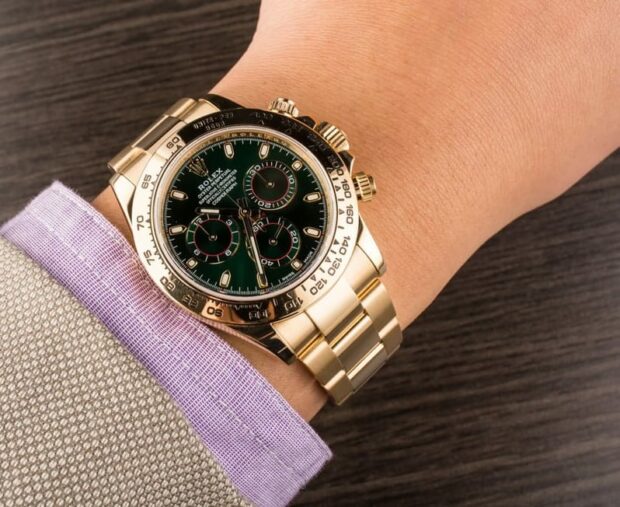When we read…say the Diamond Rolex Guide, we’ll see how luxury is always the first thing we see in the watch line. We seem to see a new world that distinguishes between Rolex watches and ordinary watches.
For many it is the last word in robust and reliable chronometers, for others an investment in cast steel that surpasses all other watch brands, the history of Rolex is as remarkable as the prices it now fetches at auction. This is why…

What about Rolex that has become the benchmark brand both for those looking for their first (or second, or third) watch and for expert speculators? In a word, image. Rolex has cultivated arguably the most refined but globally recognizable “personality” in the watchmaking firmament, driven, in no particular order, by what we might call the “three Rs”: Recognition (ranks top in brand surveys Luxury), Reputation (it is responsible for making the chronometers more certified than any other watchmaker) and Resale – a Rolex, as anyone who has read the headlines will know, is becoming something of an “alternative currency” in its own right, something like a reliable and safe bet for those looking for a return on investment if they decide to sell.
It’s the reason hundreds of billions of words have been written about the brand. But, for the record, everything you need to know about Rolex can be summed up in just nine words, which very helpfully show up even in the “simplest” Rolex on the market. These are: “Rolex” “Oyster” “Perpetual” “Superlative” “Chronometer” “Officially” “Certified” “Swiss” – “made”.
Let’s go on, the name. Rolex was born in London 110 years ago, when it was registered by the company’s founder, Hans Wilsdorf. Its origin is very controversial, but what is certain is that Wilsdorf liked that it was short and that, therefore, it looked good in the smallest spheres – and it is easy to read and say – a not inconsiderable detail for the polyglot consumer of the world today.
Clearly, Wilsdorf was a terrific salesperson, in fact, he launched what is considered the first page ad in a newspaper. The ad celebrated that British Mercedes Gleitze was the first woman to swim across the English Channel in 1927. But in reality her goal was to unveil an even greater advance: the authentic waterproof and dustproof watch, which is would know as the Oyster.
Admittedly, it was the second unsuccessful attempt that Mercedes wore the watch, tied around his neck, but fortunately for Independorf and all of us, after ten hours submerged, the water had had much less impact on the watch than on its wearer.
Mercedes’ achievement sealed the Oyster’s reputation for reliability through thick and thin, but its fame actually grew during the war, when pilots swapped their military watches for a Rolex. Wilsdorf returned the compliment by handing out watches as part of the Red Cross packages to Allied POWs, requesting payment only after the conflict had ended (it is clear which side he was on).
After the war, pilots became important brand ambassadors: Chuck Yeager was wearing his when he broke the sound barrier in 1947. And in the early 1950s he was another decorated pilot, Pan Am’s chief of navigation, Frederick Libby, who chose the new GMT-Master as the airline’s official watch. Pan Am went bankrupt around the first Gulf War, but the GMT-Master is still with us.
Similar stories surround Rolex’s history to the present: from the embryonic version of the Explorer that accompanied the climbing team on the successful summit of Hillary and Tensing’s Everest in 1953 (although it turns out Tensing was wearing a DateJust) to the Rolex. The most emblematic of them all, the Submariner, the first wristwatch capable of diving 100 meters and since then the favorite diver’s watch of both professionals and amateurs. In its “super professional” form, the Deepsea, Rolex’s ultra-submersible, has twice traveled to the deepest part of the ocean, the Mariana Trench; once in the company of Jacques Picard in 1960 and more recently aboard the DeepSea Challenger with ‘Titanic’ director James Cameron in 2012. Click this Rolex Explorers Guide for more info.
From the information above we can take a “red thread”; Rolex’s success cannot be separated from the company’s foresight in taking important moments that attract the attention of many people as the backdrop for every launch of its superior products.



